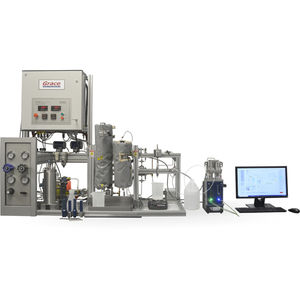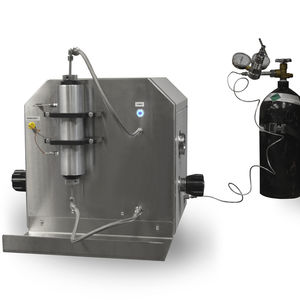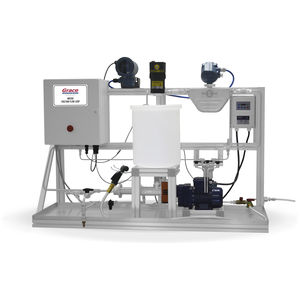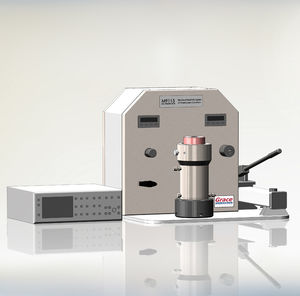
- Metrology - Laboratory
- Metrology and Test Equipment
- Gas permeability tester
- Grace Instrument Co.
Gas permeability testing system M9170porositybenchtop
Add to favorites
Compare this product
Characteristics
- Test type
- gas permeability, porosity
- Configuration
- benchtop
Description
Advanced, Cost-Effective Permeability and Porosity System
The Grace Instrument M9170 High Pressure Porosity and Permeability System is an advanced instrument that performs porosity and permeability tests on both high permeability and low permeability plug-sized core samples under confining pressures of up to 10,000 psi. Standard unit is compatible with nitrogen testing media (helium optional).*
Versatile Device Supports Porosity, Low Permeability, High Permeability, and Klinkenberg-Corrected Permeability
The M9170 makes porosity measurements using the pressure to volume relationship given by Boyle's law. The porosity of a material is the percent of void space in a known solid volume. Effective porosity is the percent of this space that is interconnected and would be capable of containing oil or natural gas. To measure the effective porosity, a known volume of gas is pressurized in the reference cell. When the valve is opened, gas expands into the core holder and the new pressure is measured. Since pressure is inversely proportional to volume from Boyle’s law, the volume of the g value, the porosity, and the grain volume of the core can then be found.
The M9170 measures both low and high core gas permeability by using the unsteady state pulse decay method and steady state flow method. When the M9170 uses the unsteady state pulse decay method, the gas permeability of low permeability cores is measured. A known atmospheric volume of gas is pressurized and trapped in the reference cell and the exit valve is kept shut. When the valve is opened, the gas will flow through the core holder due to the pressure difference.
Catalogs
Related Searches
- Test machine
- Measuring device
- Test cabinet
- Automatic test machine
- PC-controllable testing machine
- Compression test machine
- Hydraulic test machine
- Automatic testing system
- Durability test chamber
- Electronic testing machine
- Viscosity measurement device
- Benchtop testing system
- Tabletop testing machine
- Cement test machine
- Semi-automatic test machine
- Dynamic test machine
- Laboratory testing system
- Compact test machine
- Friction test machine
- Laboratory viscometer
*Prices are pre-tax. They exclude delivery charges and customs duties and do not include additional charges for installation or activation options. Prices are indicative only and may vary by country, with changes to the cost of raw materials and exchange rates.











